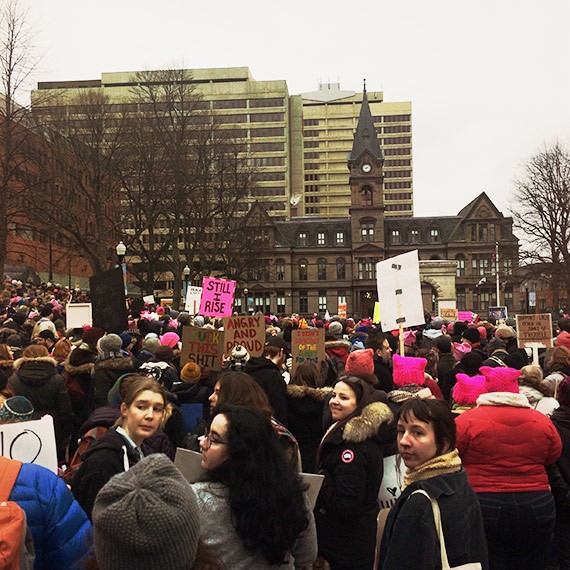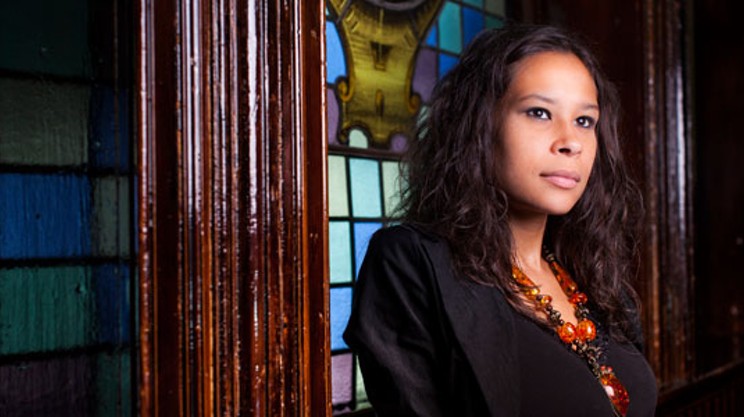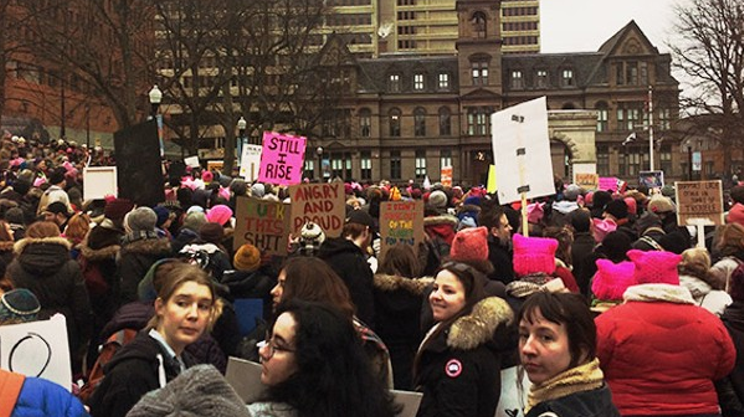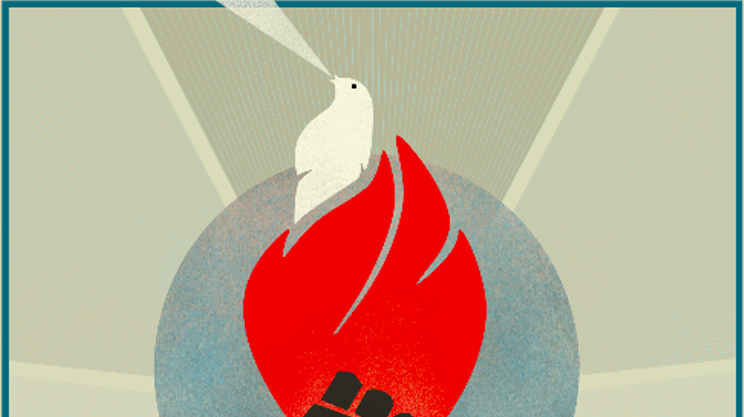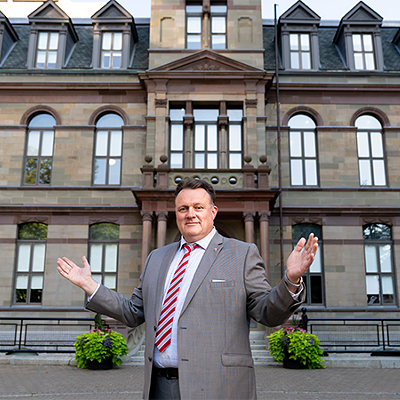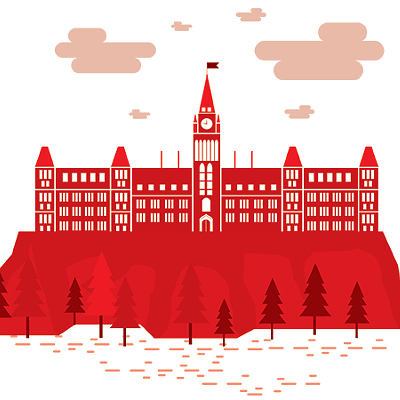Dawn Ferris says it was “overwhelmingly wonderful” to see all the people who packed Grand Parade Square for the Halifax contingent of the Women’s March on Washington.
According to Women’s March Canada, 2,500 people turned out to protest the new administration of the United States. Although Donald Trump has been the name on many minds, he wasn’t explicitly mentioned by any of the event’s speakers.
“Our goal was to have an uplifting, hopeful experience—that people would leave feeling hope in face of the darkness ahead,” says Ferris, one of the local organizers.
“We really just asked the guest speakers to speak without naming Trump, without being negative and bringing hopeful messages, and they really came through.”
Marches such as the one in Halifax took place across the continent and abroad, allowing people to participate without travelling to Washington. Some folks travelled anyway.
Holly Rice was one of them. Originally from Nova Scotia, she’s currently attending university in New York City. She could have attended the NY-based protest, but she felt the urge to march on Washington.
“Ever since the election, I’ve just been between this feeling of like, numb to what is happening and still absolutely devastated,” says Rice.
“I got to a point where I was like: ‘I need to feel like I am doing something.’”
Rice got together with four friends, packed up a rental car and made the four-hour drive to DC. They parked at the metro station just outside the city. When they got in line for passes, people were lined up out the door and around the block.
Saturday was, reportedly, the second busiest day for DC’s metro system—the first being Barack Obama’s 2009 inauguration.
“It was the most people I’d ever seen and they all had these beautiful pink hats on.”
For Rice, the most emotional part of the march was seeing so many mothers who brought their children.
She’s still struggling with how to make sure she stays active in the cause, but she has a few ideas. Not everyone has the means to donate money, for example, but what someone might spend on a t-shirt that says “Nasty Woman” would be better off going to an organization that needs it.
“Instead of buying it from Etsy or an independent seller, buy the one that’s proceeds go to Planned Parenthood,” says Rice.
She also feels it’s important to engage with people, whether they be family members or people on social media.
“As much as social media activism can get cumbersome and tiresome and a lot of the time we’re just preaching to the choir—still engaging with each other, I think, is a positive thing.”
Rice adds that penning letters to mayors and representatives is as necessary in Canada as it is in the United States.
“Do things that are political event at home, so that we can learn from this mistake that the United States has made and make sure that we don’t make the same.”
Ferris notes that Women’s March on Washington has launched action items for the 10 Actions/100 Days campaign, but she says it’s mostly US-specific. She has some suggestions of her own for women who want to continue making a difference.
“Find out both your federal and your provincial riding associations in whatever political party you support personally and sign up,” says Ferris.
“Join. Get involved. Be the change you want to see.”

